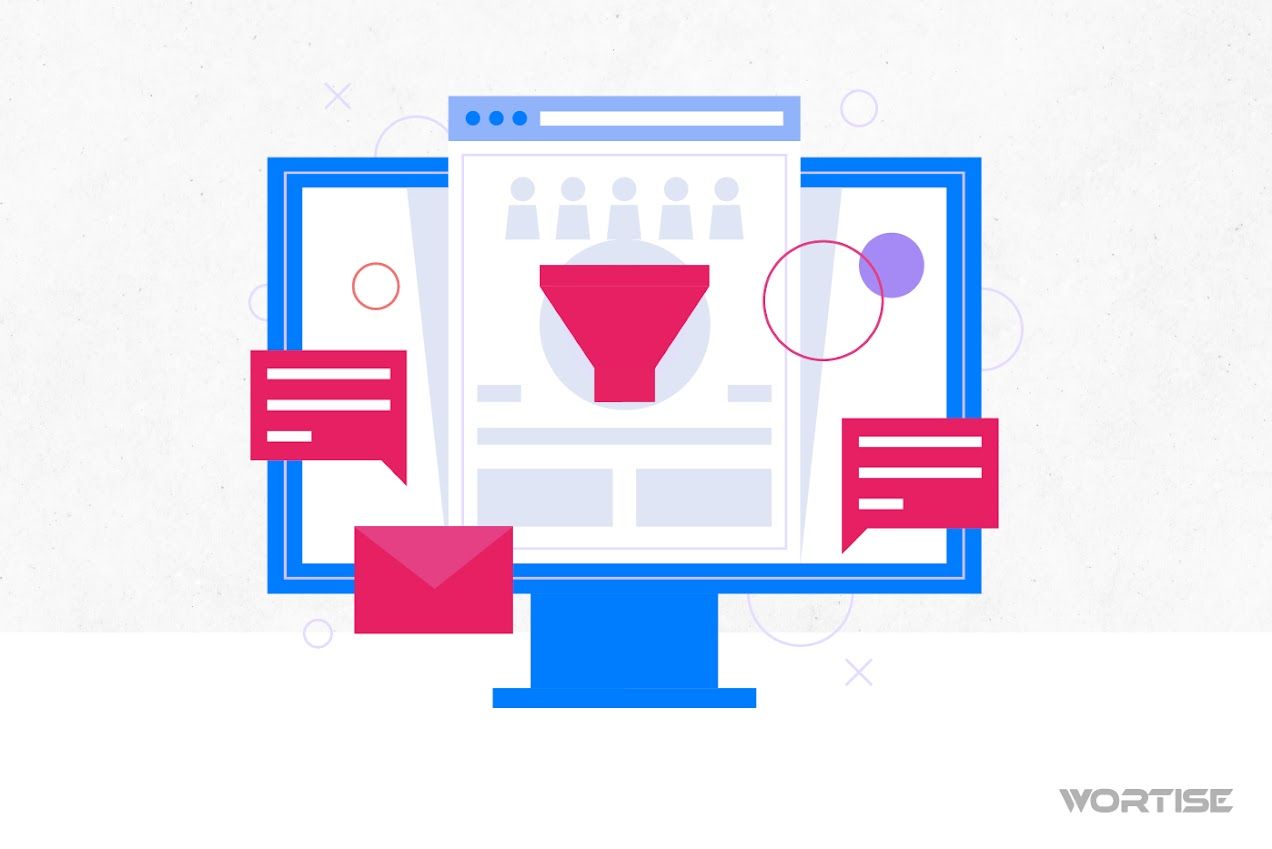Finding an ad network that won’t disappoint you is like finding the love of your life: it’s a challenge, and you need to make sure you get it right to avoid disappointment. Although there are methods and strategies, one of the keys to choosing the right ad network is not to rely on instinct or chance.
Some platforms have a good reputation and are supported by a large community of publishers and advertisers. However, their technology may not be suitable for your type of app or website. That’s why it’s essential to know the key aspects an ad network should have so that your ad campaigns don’t disappoint.
Will it be difficult? What factors should you consider? We’ve prepared this article to reveal the secret of how to choose an efficient ad network. Let’s get started!
What is an Ad Network?
An ad network is a platform that connects advertisers with publishers to display online ads on mobile apps or websites. They act as intermediaries, allowing advertisers to gain visibility and publishers to earn money by offering their ad space.
Without ad networks, the process of buying and selling ads would be much more complicated, as they offer a wide variety of ad inventory to reach audiences worldwide.
The secret of these platforms lies in the tools they offer. For example, thanks to them, you can track impressions and clicks, collect relevant audience data, and segment your audience, making it easier to make informed decisions to improve campaign effectiveness.
How to Choose the Ideal Ad Network?
Before buying a smartphone, people usually check the technical specifications: camera quality, memory, processor, and storage, all to ensure it meets the “acceptable” standards for everyday use.
Something similar happens with ad networks: each one has specific features that help publishers and advertisers make the most of them—or not.
When choosing one, consider these points:
A Good Volume of Advertisers
The first thing an ad network must have is a solid base of advertisers interested in your niche or industry. The formula is simple: the larger the advertiser demand, the more opportunities you’ll have to obtain valuable ads for your audience.
You can’t expect to increase your effective cost per thousand impressions (eCPM) if you opt for an ad network with limited reach or one that isn’t well-known.
Investigate and Compare Options
Another valuable tip is never to go with the first option. Your primary task should be to thoroughly research the available ad networks and choose the one that aligns with your goals and is easy to use.
What can you do? Ask colleagues, read online reviews, and compare different platforms to determine which is the most suitable. In this research, be sure to analyze their reputation and their payment methods for publishers (whether biweekly or monthly).
Believe us, thorough research will help you make an informed decision and avoid disappointment.
Evaluate the Quality of the Ads
All ad networks offer different ad format options, but if you want to avoid disappointment, stick with the one that offers innovative formats that align with technological advancements.
Static ads aren’t as relevant as animated ads that incorporate audiovisual elements and take up strategic screen space. In addition to this, another key aspect to consider is that the ads display in high quality and reach the right audience.
Consider Personalized Support
Imagine you’re from Argentina and you choose a South Korean ad network whose interface is set to Korean, and by chance, one day you have a problem and need help from a technical operator. A total disaster!
Make sure the platform has excellent personalized technical support to immediately resolve any issues you may encounter in the monetization process.
Rest assured, an ad network with personalized support will give you peace of mind and help you avoid headaches.
Test the Platform
Before buying the whole cake, try a slice to see if it’s worth it. In other words, before committing long-term, try using a platform for a specific trial period.
For example, use it for one or two months to see how it goes. During that time, you’ll be able to evaluate its functionality, the effectiveness of the campaigns, the performance of the ads, the fill rate, and the reach to key audiences.
That time will allow you to know whether the platform is what you need or, on the contrary, if it’s better to look for another option.
Precise Targeting
This is no game—targeting plays a crucial role in any ad network. Each platform has its own technology to reach audiences, and your job is to find one that offers strategic targeting, with advanced options based on age, demographics, interests, online behavior, device type, and other key criteria.
It’s not just about reaching thousands of users to “cover more ground”; the real importance lies in reaching the users who will engage with the ad. Some platforms offer targeting based on first-party data, which offers outstanding performance due to the amount of user data they’ve collected.
Ad Network vs. Ad Exchange: What’s the Difference?
An ad network is often confused with an ad exchange, perhaps because both are used to manage advertising matters. However, they have some differences every publisher should know to make the most of each one.
For example, an ad network acts as an intermediary between the supply of ad spaces and the demand from advertisers. It does this by grouping inventory based on predefined criteria (audiences, formats, geographical area, etc.).
Then, the ad network runs the ad placement process, ensuring there’s a “match” between ads and ad spaces.
Meanwhile, an ad exchange operates as a negotiation medium between publishers and advertisers through real-time auctions (bidding), meaning the price of each inventory is variable and fluctuating.
An ad exchange eliminates the intermediary and allows transactions to be more transparent. In summary, an ad exchange has a more volatile and competitive market than an ad network.
How to Sell My Ad Inventory on an Ad Network? Steps to Follow
An ad network works like a wholesale supplier that sells large quantities of products in a classified manner. That is, the ad network classifies the existing supply of spaces and connects it with advertisers who—in theory—can best take advantage of those spaces.
It does this through a mediation process between publishers and advertisers without direct contact between them. But to simplify, let’s summarize this process into five steps:
#1 Connected Platforms
Both publishers and advertisers must set up their spaces according to their interests. Publishers integrate it into their app, while advertisers program their campaigns to ensure the ads display correctly.
#2 Define the Inventory to Offer
Publishers must now specify the number of impressions they want to make available to the ad network. It’s like displaying their product in a showcase, and the buyer, in this case the advertiser, decides if it’s suitable or not.
That’s why it’s common for publishers to offer their premium inventory on ad networks to capture the attention of advertisers.
#3 Advertisers Configure Their Campaigns
Now it’s the advertisers’ turn to set the details of their campaigns. They must define which audience they want to reach, the type of ad they will display, and, of course, the budget they have to achieve this.
Here, they can choose the method in which that budget will be spent. It can be cost per click, installation, or simply for ad views.
#4 The Ad Network Matches Ads and Spaces
After analyzing the requirements of publishers and advertisers, the ad network works to place relevant ads for predefined audiences based on age, geographic location, behavior, and other key data.
#5 Spaces Connected and Ready to Go
Once all the steps mentioned above are completed and the inventory is purchased, the ads begin to display in the publisher’s app following the guidelines set by the advertiser.
Now, it’s just a matter of constantly monitoring the statistics and making adjustments if the campaign isn’t delivering the expected results.
Three Ad Networks You Can Choose Without Hesitation
There are hundreds of ad networks in the market, and we’ve published several articles showcasing various ones with their respective characteristics. In this article, we’ll focus on showing you three options so you can compare and choose the one that best suits your needs.
#1 Wortise
We are a platform created by publishers for publishers, featuring an intelligent mediation and targeting system to maximize the performance of each campaign.
We use first-party data technology to achieve precise targeting and reach the ideal user. This allows any app to display ads from Ford, Netflix, HBO, or Toyota. And if there’s an irrelevant or offensive ad, don’t worry—our system automatically blocks it.
We are connected to ten smart mediation networks that guarantee publishers a fill rate of over 95%, even providing eCPM levels higher than those offered by AdMob.
Additionally, with Wortise, you can monitor your campaigns without slowdowns and intuitively, thanks to our dashboard with real-time metrics. And yes, we also offer personalized support to address any issues instantly.
#2 Google AdMob
Creating a top three list of ad networks without including Google AdMob would be madness. This platform from the tech giant offers a wide variety of formats such as banners, interstitials, and native ads to personalize the user experience.
It provides detailed statistics on how users interact with an app or ad, and if the publisher isn’t satisfied with the result, AdMob can be integrated with Google Analytics for more comprehensive statistics.
#3 AppLovin
Designed for apps, this ad network and monetization platform offers publishers a series of machine learning algorithms that analyze user behavior data in real time to deliver the right ads.
It features testing and control tools that help publishers determine which ad combinations are most profitable, as well as a metrics section that provides the exact number of impressions and click-through rates.
Monetize Without Disappointments with Wortise: Maximize the Potential of Your Campaigns
Hello, publisher! At Wortise, we’re here to help you monetize your app in the best possible way. We connect with more than 100 ad networks to ensure your inventory is available to premium advertisers from various parts of the world.
And if you have a gaming app, you can take advantage of our latest product launched in early 2024: AdMonet, an advanced solution that connects you with more than 200 advertisers and a vast network of Ad Networks linked to mobile gaming.
Simplify the monetization process with us and enjoy a high eCPM, personalized support, and 1-on-1 guidance to maximize your efforts.




